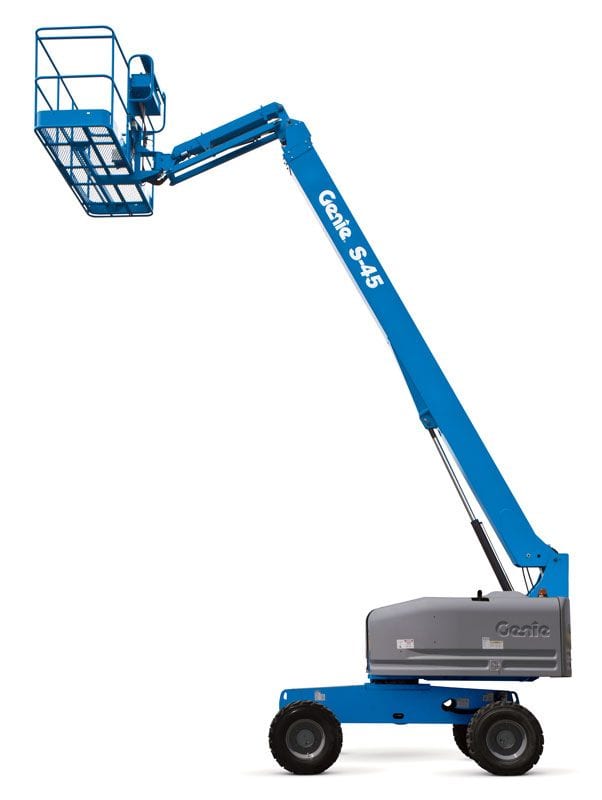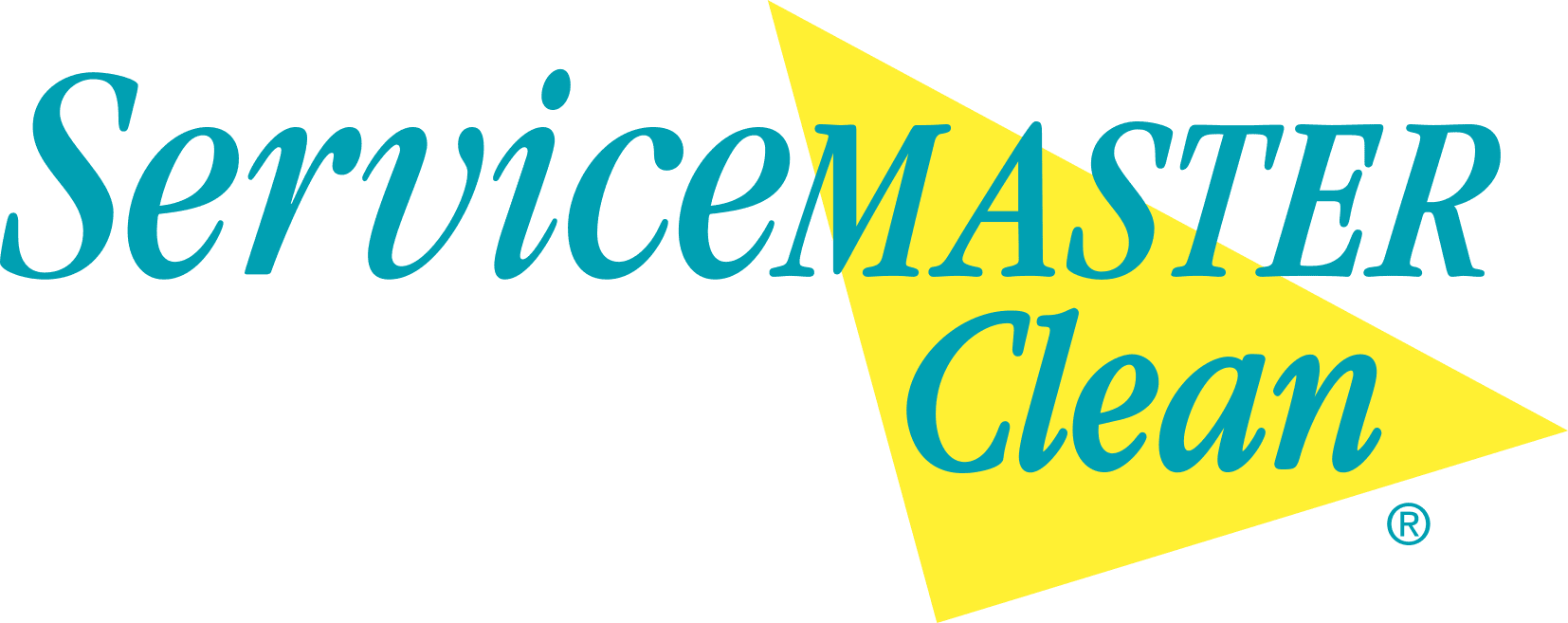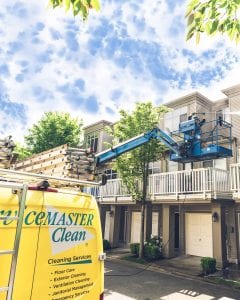Aerial Lifts vs Ladders – WorkSafe Part 11
Services such as gutter cleaning, dryer-vent cleaning and window washing often require workers to perform some kind of work-at-height. Working at heights over 10 feet is considered high-risk by Canadian health and safety authorities and with good reason. Approximately one-third of workplace lost-time injuries and deaths are related to falls from height.
When it comes to our workers, ServiceMaster believes the only acceptable solution is the safest and best solution. In many cases, companies would rather cut corners by requiring their staff to work off of ladders and rooftops when there are safer and better alternatives. This is not only socially irresponsible, but in many cases may actually incur additional liabilities on both the service company and the property owner.
What is the problem?
Many strata properties and townhouse complexes were constructed without proper consideration for fall protection during essential maintenance operations. It is exceedingly rare for low-rise complexes to have permanent fall protection anchors installed on the roofs. This can potentially leave maintenance companies in an awkward situation.
If no appropriate fall protection anchors can be found, companies can be left with limited options. One option is to install temporary anchors for the duration of the job, potentially compromising the integrity of the roofing system and incurring additional liability if the building begins to leak. Another option is to work off of ladders, without the benefit of fall protection. While few would argue that working at height off of a ladder is a particularly safe option, it can be considered an acceptable practice by regulators where there are no other practical options.
WorkSafeBC guideline 11.2(5)-3 states “If the use of a fall arrest system is not practicable, or will result in a hazard greater than if the system was not used, the employer must ensure that work procedures are followed that are acceptable to the Board and minimize the risk of injury to a worker from a fall.”
It goes on to say that “Working off of a portable ladder doing a “light duty task,”… …where the ladder will be set up with its base at the same physical location for sporadic, short-term work…” is acceptable without additional fall protection, assuming the proper steps for ladder safety are followed. But the guidelines also provide the following important caveat. “Where terrain and accessibility allow for other means of performing the work (e.g., a scissor lift or movable work platform), the use of other such means is to be considered prior to completing the work from a portable ladder.'”

But what does this really mean?
This means that according to WorkSafeBC, it’s only acceptable to work off of a ladder without additional fall protection, if fall protection anchors are unavailable AND if a movable work platform cannot access the work locations. According to regulators, the best and safest option for many maintenance tasks is a powered lift. In many cases, it might be the only legal option.
But as a property owner how does this actually impact you?
You’re hiring a third party company to do some work, surely responsibility for the safety of their employees is strictly up to them? You can’t be held accountable for their actions or omissions, or can you?
In 2010 WorkSafeBC fined a company called West Fraser Mills $75’000 for the safety omissions of one of their subcontractors. West Fraser Mills hired a company to perform a service on their property. This company hired a subcontractor and that subcontractor then violated the health and safety regulations, resulting in his death. West Fraser Mills argued it was not their employee, and they did not direct the work so they were not responsible for the subcontractor’s safety omissions.
Despite this, after years of expensive court battles, the Supreme Court of Canada upheld the fine. It was determined that the property owner had a legal duty to ensure the work methods being employed on their property were appropriate.
Not only is working out of a man-lift with a fall protection system in place the safest option, it’s generally the most efficient. When working off of ladders, workers must constantly climb up and down and reposition the ladder, checking its stability. This takes considerable extra time. When dealing with very tall ladders, every ladder move takes additional time, increases the risk of personal injury and property damage from mishandling.
It is for these reasons that ServiceMaster recommends a boom-lift wherever practicable.

